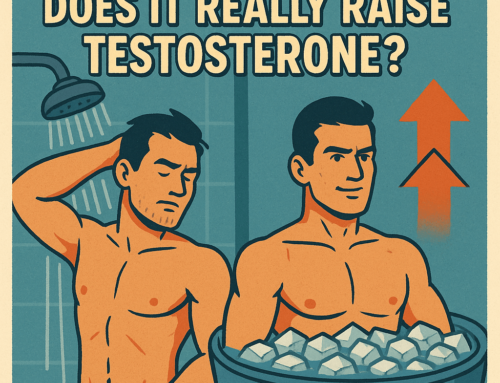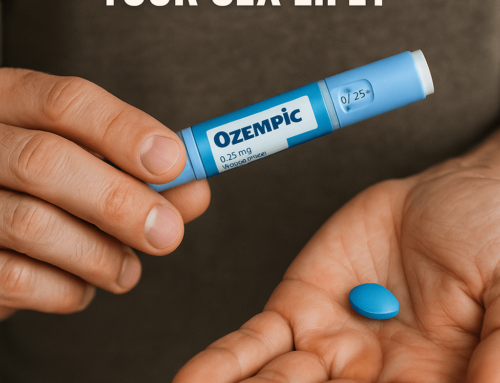Testosterone deficiency is a common issue that affects over 40% of men over the age of 40. Low testosterone, or hypogonadism, is often defined as a total testosterone level below 300 mg/dL. Although, it can be difficult to define a standard as levels vary depending on the time of day and can be affected by factors such as Body Mass Index (BMI) or obesity, alcohol consumption, nutrition, medications, age, and illness. Up until the last decade, symptoms of low testosterone were often thought of as a “normal” part of aging. Between 2003 and 2013, a nearly four-fold increase in androgen scripts was witnessed and serves a testament to the potentially life-changing benefits of testosterone replacement therapy. Some of those benefits include improved mood, increased energy and motivation, better sleep, sharper focus, and increased libido or sex drive.
While, testosterone replacement therapy (TRT) is gaining in popularity and is a proven, effective treatment for men with suboptimal testosterone levels; it does not come without potential drawbacks and side effects. And one of the common concerns from patients is the impact on fertility.
Many patients seeking treatment for low testosterone may be unaware of the potential for infertility. It is important to note that low testosterone itself does not cause infertility. Yes, testosterone is required for sperm production but it is not the only hormone contributing to the production of sperm. The production of testosterone by the body is a complex process, balancing interactions between the brain and the body. The brain is constantly monitoring the level of testosterone in the body. When it detects low levels, the brain produces a hormone called gonadotropin-releasing hormone (GnRH). This leads to increased production of follicle-stimulating hormone (FSH) and luteinizing hormone (LH), which in turn triggers sperm production as well as testosterone production in the testes.
When men are on treatment for low testosterone or taking external testosterone, that process is suppressed. Meaning the brain never detects a “low” level of testosterone, thereby not increasing the production of GnRH. Without GnRH, the body does not signal testicular production of testosterone or sperm, which can lead to a decrease in sperm count for those on replacement therapy. Patients need to understand that 2% of all men are sterile, regardless of their testosterone levels or history of replacement therapy.
A lower sperm count does not necessarily cause infertility but it could make it more difficult to conceive. For those on TRT, the effects of a decreased sperm count are typically only temporary and can return to normal with cessation, as it was once thought the best way to regain fertility was to stop treatment. However, a study from Baylor University showed that supplementation with human chorionic gonadotropin (hCG) in men receiving testosterone replacement therapy had preserved sperm production.
The Fertility Booster
Human chorionic gonadotropin is often referred to as the “pregnancy hormone” in women because it plays a crucial role in maintaining a pregnancy. It also has a role in stimulating the ovaries and egg maturation for females. In men, it functions similar to LH to increase testicular production of testosterone and sperm. Both intra-testicular and total testosterone levels can show measurable increases with hCG use. Therefore, play a role in infertility and testosterone deficiency. It can also increase testicular size in men who experience atrophy from testosterone deficiency related to decreased testicular production of testosterone or those on replacement therapy.
Testosterone + HCG: The Baylor Study
In the Baylor Study, 29 men with normal reproductive physiology received testosterone enanthate 200 mg weekly in combination with either placebo or 125 IU, 250 IU, or 500 IU of hCG every other day for 3 weeks. It was discovered that intratesticular testosterone levels increased with increasing hCG dose. For those with no hCG replacement, there was no intratesticular testosterone and with dosing of 500 IU levels were back to baseline. This same process was then used to evaluate sperm production while on testosterone replacement therapy. In this smaller study, no one had zero sperm production and minimal decline in sperm count was noted. They then expanded the study from 10 men to 26 men and concluded that low dose hCG appeared to maintain sperm quality in men on TRT. Despite an average post-treatment testosterone level of 1055 ng/dL, semen count, motility and morphology did not significantly change. Providing significant hope for men with symptoms of low testosterone or hypogonadism affecting daily life and relationships, who still desire fertility, to safely undergo treatment to improve their quality of life and get back to feeling like themselves again.
Beginning Treatment
Here at Limitless Male, we use a cutting edge approach, including testosterone and hCG, to safely increase testosterone levels and ensure overall improvement in health. Learn more about Testosterone Replacement Therapy and see if you might be a candidate for treatment.






